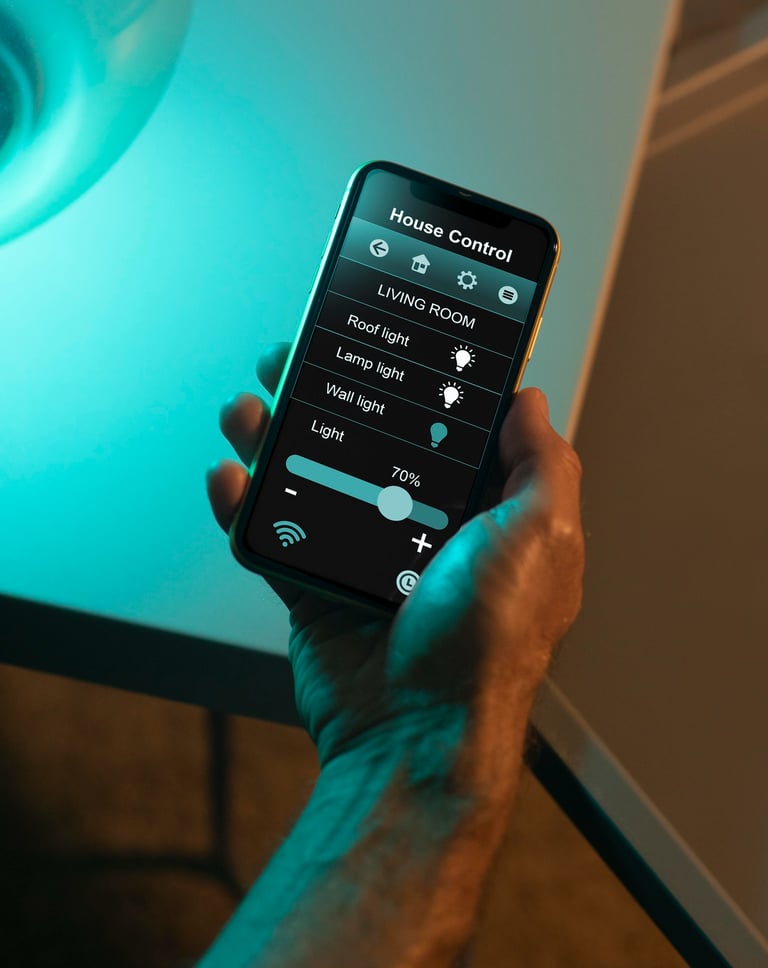Innovation in Interior Design Services: A Decade of Transformation
DESIGN
The last ten years have witnessed a seismic shift in the world of interior design. Far from being solely about aesthetics, the industry has embraced groundbreaking innovations, transforming how spaces are conceived, created, and experienced. From cutting-edge technology to a renewed focus on sustainability and personalized living, let's delve into the remarkable evolution of interior design services over the past decade.
The Digital Revolution: Visualizing Dreams into Reality
Perhaps the most impactful change has been the widespread adoption of digital tools:
Virtual Reality (VR) and Augmented Reality (AR):
Gone are the days of clients relying solely on 2D sketches and mood boards. VR headsets allow clients to "walk through" their redesigned spaces before a single wall is painted, experiencing the layout, scale, and ambiance with unparalleled immersion. AR apps, on the other hand, let users overlay virtual furniture and decor onto their real-world environment using their smartphones, enabling instant visualization of how pieces will look and fit. This has drastically improved client communication, reduced costly mistakes, and accelerated decision-making.
3D Modelling and AI-Powered Design:
Advanced 3D modelling software has become the industry standard, allowing designers to create highly detailed and realistic renderings. Complementing this, AI tools are emerging, capable of analysing vast amounts of data to identify trends, predict client preferences, and even generate design concepts based on specific inputs like room dimensions, style preferences, and budget. This not only boosts efficiency but also opens doors to incredibly customized and data-driven design solutions.
Enhanced Collaboration Platforms:
The rise of cloud-based project management tools and communication platforms (like Mydoma Studio, Houzz Pro, and even general tools like Slack and Google Drive) has streamlined collaboration between designers, clients, and contractors. These platforms facilitate seamless file sharing, real-time feedback, and efficient task management, regardless of geographical location.
Smart Homes, Seamless Integration
The "smart home" concept has moved beyond novelty to become an integral part of modern interior design:
IoT (Internet of Things) Integration:
Designers are now seamlessly incorporating IoT devices into their designs, creating connected living spaces. This includes everything from smart lighting systems controlled by voice or smartphone to automated window treatments, smart thermostats that learn user preferences, and integrated security systems.
Concealed Technology:
The focus is on making smart technology aesthetically pleasing and unobtrusive. Designers are finding innovative ways to conceal wires, integrate charging ports into furniture, and even embed smart control panels discreetly into walls or cabinetry, ensuring that functionality doesn't compromise design elegance.
Personalized Automation:
Smart homes are now about more than just convenience; they're about personalization. Designers are creating "scenes" that adjust lighting, temperature, and even music based on a client's daily routine or mood, truly tailoring the living environment to their lifestyle.




A Greener Footprint: Sustainable and Biophilic Design
Environmental consciousness has profoundly impacted interior design:
Sustainable Materials:
There's been a significant shift towards using eco-friendly, recycled, reclaimed, and locally sourced materials. From reclaimed wood and bamboo flooring to low-VOC paints and natural textiles, designers are prioritizing products with a low environmental impact.
Energy Efficiency:
Sustainable design now inherently includes strategies for energy conservation. This involves maximizing natural light, incorporating energy-efficient LED lighting, and specifying smart thermostats and appliances that reduce energy consumption.
Biophilic Design:
Bringing the outdoors in has become a powerful trend. Biophilic design integrates natural elements like living walls, indoor plants, natural light, and organic patterns into interior spaces. This not only enhances aesthetics but also promotes well-being, reduces stress, and improves indoor air quality.
Circular Economy Principles:
The concept of "reduce, reuse, recycle" is gaining traction, with designers embracing adaptive reuse of existing structures and prioritizing modular and flexible furniture that can be reconfigured or repurposed, minimizing waste.
The Art of Personalization: Story-Driven Spaces
Beyond trends, the past decade has emphasized creating spaces that truly reflect the inhabitants:
Tailored to Lifestyle and Personality:
Interior design services are increasingly focused on understanding the client's unique story, cultural heritage, hobbies, and aspirations. This goes beyond simply choosing a style; it's about crafting spaces that resonate deeply with the individual or family.
Meaningful Elements:
Designers are incorporating heirloom pieces, vintage finds, artwork with sentimental value, and elements that highlight personal achievements, making spaces feel authentic and lived-in rather than showroom perfect.
Sensory Design:
The concept of engaging all five senses is gaining prominence. This includes considerations for acoustics, natural scents, varied textures, and curated lighting to create truly immersive and comfortable environments.
Looking Ahead
The past decade has been a period of immense innovation in interior design services. The integration of technology has made the design process more efficient, collaborative, and visually compelling. Simultaneously, a heightened awareness of sustainability and the desire for deeply personalized spaces have reshaped design philosophies. As we move forward, we can expect these innovations to continue evolving, leading to even smarter, more sustainable, and profoundly personal interiors that truly enhance our lives.
FOQ
Q1: How has the client experience evolved due to these innovations?
A1: The client experience has become far more collaborative, transparent, and personalized. Clients now have unprecedented visibility into the design process through realistic visualizations, allowing for earlier feedback and fewer surprises. Communication is often faster and more efficient via dedicated online portals. The ability to iterate on designs quickly and see real-time changes has also significantly enhanced client satisfaction.
Q2: Has sustainability become a bigger focus in interior design services over the past decade, and how?
A2: Absolutely. Sustainability has moved from a niche concern to a mainstream expectation. Over the last decade, designers have increasingly focused on sourcing eco-friendly and recycled materials, advocating for energy-efficient lighting and appliances, designing for longevity and adaptability, and incorporating biophilic elements. The emphasis is now on creating healthy, resource-efficient spaces with a reduced environmental footprint throughout their lifecycle.
Q3: What role does Artificial Intelligence (AI) play in contemporary interior design services?
A3: AI is beginning to play a significant role in various aspects. It can assist with rapid space planning and layout generation, analyze vast databases of materials and furniture to suggest optimal choices based on client preferences and budget, predict design trends, and even automate some repetitive administrative tasks, freeing up designers for more creative work.
Q4: How has the rise of social media and online platforms impacted interior designers and their services?
A4: Social media platforms like Instagram and Pinterest have democratized design, making it more accessible and inspiring. For designers, they've become powerful marketing tools for showcasing portfolios, attracting new clients, and building personal brands. They've also fostered a global design community, allowing for easier collaboration and the sharing of ideas and trends across geographical boundaries.
Q5: How have global design trends influenced local interior design services in India during this period?
A5: Global trends have significantly influenced Indian interior design, leading to a blend of international aesthetics with traditional Indian elements. The focus on minimalism, open-plan living, smart home technology, and sustainable materials has become more prevalent. However, Indian designers often adapt these trends to suit local climatic conditions, cultural nuances, and the availability of indigenous materials and craftsmanship, creating a unique, contemporary Indian design identity.







